AUTODROMO CARLOS PACE
Round 18 , 07 November, 2010. Interlagos, Såo Paulo, Brazil
Lap : 4.309km/2.677 miles | Offset : 0.030km | Race : 71 laps - 305.909km/190.067 miles
Official Website
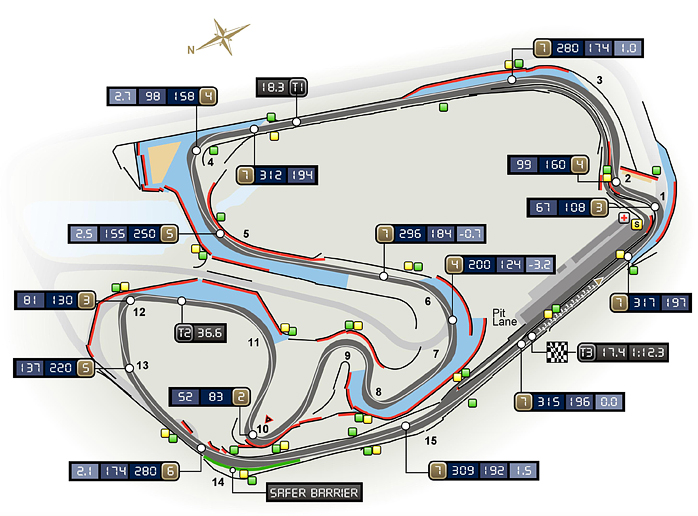

CHANGES TO CIRCUIT SINCE 2009
• A two meter wide strip of artificial grass has been laid behind the kerb on the exit of turn 4, replacing the grasscrete.
• New negative kerbs have been installed on the exit of turns 5, 7, 11 and 12.
• The grass between the end of the kerb on the exit of turns 7 and 8 has been replaced by an artificial product.
• All white lines on the track edges, in addition to any coloured areas in the run-offs, have been painted with a suitable non-slip product.
Lap record: 1:11.473, Juan Pablo Montoya, Williams-BMW, 2004
07 November 2010
Force India VJM03 - F-duct
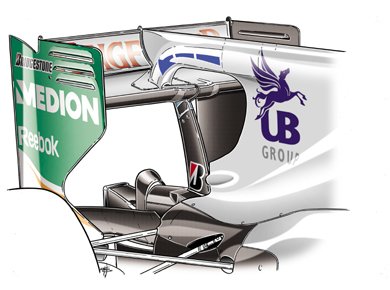 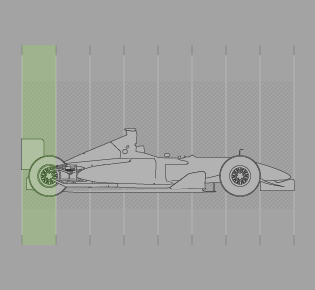
Force India were the first team to have the F-duct blowing on to the rear wing's main plane instead of the flap (blue arrow). This system was introduced in Silverstone then copied by Renault at Spa, Red Bull and BMW Sauber in Singapore, and McLaren in Japan and Korea. It's a more powerful and efficient solution. Ferrari were also expected to follow Force India's example, but chose instead to concentrate on their blown diffuser solution.
07 November 2010
Ferrari F10 - modified brake ducts
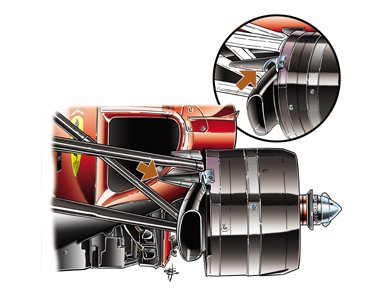 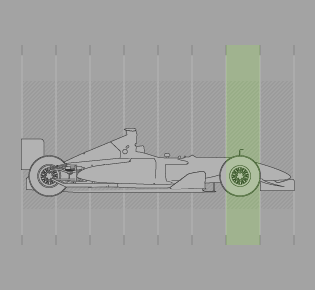
An additional, small fin has been added to the front brake ducts in Brazil to gain any extra downforce possible. On Friday only Alonso had it, together with a three-slot configuration in the underbody in front of the rear tyres. It's interesting to note that in the final few races of 2010 a lot of effort has been made by all the teams to optimise the aero efficiency of the brake ducts, almost treating them as aerodynamic devices.
07 November 2010
Ferrari F10 - blown diffuser
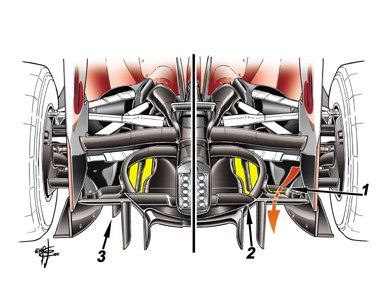 
Finally Ferrari implemented their complete blown diffuser solution in Brazil with the airflow from the exhausts also blowing inside the side channels. Unlike the Red Bull, it features a horizontal hole (1) rather than the vertical one of the RB6. The central section used in Korea has been modified with more rounded profiles (2) and the additional middle plate (3) that was seen on the car up until Suzuka has now been removed.
07 November 2010
Williams FW32 - rear brake ducts
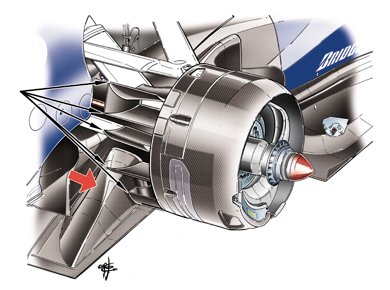 
The majority of teams have been busily evolving their brake ducts, to the point that they are becoming more like aero devices. Williams' most recent version, as seen in Brazil, has been designed to recover as much downforce as possible and uses a series of fins (black arrows). The shape of the area between the rear tyres and the side channels of the diffuser (red arrow) is designed to receive air blowing from the car's exhausts.
|